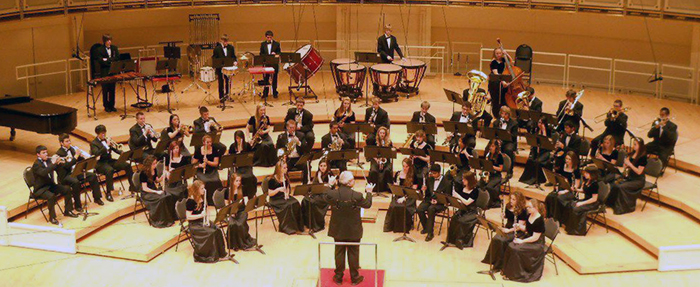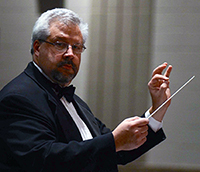
Summer is winding down and hopefully, the weather is beginning to cool. School has started and every teacher eagerly looks forward to the most productive year they have ever had. The first bell rings and before you know it, the reality of school has you pinned against the wall and your focus changes from grandiose images of what a successful program looks like, to wondering how you’re going to make it to Friday. It’s easy to get bogged down in the day to day, but with some thought and preparation your vision of success is within reach.
Define Success
The first step in establishing expectations for success is to place success in the context of your specific situation. As music teachers, it is easy to say, “I want my students to sound like that ensemble.” You may have to accept that you don’t teach at that school and that you teach the kids that walk in your doors. I teach in the suburbs of Chicago surrounded by some of the finest music programs in the country. However, my school has one of the highest rates of low-income students in the county as well as one of the most diverse populations. This is not to say we shouldn’t have high expectations of our students, but if the program you envision requires students to invest in private lessons to reach that goal while the reality is that many families are lucky to own a used instrument, then you need to adjust your vision.
A second part to establishing successful expectations is really defining what success means for you. Does success include defining your program through competitive music events or is it providing other high quality musical experiences? It is matter of personal opinion how to measure what a successful music program looks like, but the standard to which success is measured must be first and foremost clear in the teacher’s mind before those expectations can be expressed to others.
We have to be careful about defining our success with simple measures (the ensemble will attain a specific rating at festival, X number of students will receive high ratings at solo contest etc.) Those are adequate goals but the variables that produce those numbers don’t always reflect success because of their inherent subjectivity. Your definition of success should be uniquely your own, attainable, and flexible.
Vison and Mission
Define your vision and promote it through your mission. A vision, whether published in a simple statement or understood through presentation, is an image of what success would look like as a completed goal, while your mission would be what you do daily to move towards that vision.
My vision might be something like this:
I believe every child in our community should experience music on a deep personal level and become skilled in expressing themselves in music.
To move towards that goal, participants (students, parents and educators) must make a concerted effort to improve students’ musical skills so as to deepen and enrich the musical experience. That’s not very concrete, but music and the arts should not be defined in such concrete terms.
Establish Expectations
In Daniel Coyle’s book “The Talent Code,” his analysis of successful teachers gives us some very helpful ways to establish and maintain success. I use a mixture of his advice as well as some of my own experiences to establish our expectations:
- Explain your expectations in simple terms.
- Consistently reinforce your vision. Everything you do and say should be in support of reaching that vision.
- Maximize class time by emphasizing doing over explaining. Make music, give short concise instruction and reinforce. Don’t lose the war trying to win a battle.
- Keep instructions short and focused. Select one goal to improve and develop the clearest and simplest verbiage to get there.
- Prepare. Make the most out of the time you have with your students by making sure you are prepared. We can’t expect students to be prepared if we don’t demonstrate the same skill.
- Develop a long term calendar and identify short term goals as steps. Make sure those steps are included in your daily interactions with students.
- Above all, make great music! Your students may not be the most skilled but every student can make music if properly trained.
For the new teacher and the veteran, take some time daily to reflect on what occurred during the day and to prepare for tomorrow. View each aspect of that reflection through the lens of your vision and adjust your educational priorities accordingly.
Much of this seems common sense but the reality is that it is easy to become sidetracked by tasks that are not related to our vision. Remind yourself and your students regularly your vision of success and the vision will become a reality.
 Mark Corey is the director of bands at Addison Trail High School. During his tenure, enrollment in band has nearly tripled, they’ve added two curricular jazz ensembles, and students have performed at numerous festivals and venues across the United States.
Mark Corey is the director of bands at Addison Trail High School. During his tenure, enrollment in band has nearly tripled, they’ve added two curricular jazz ensembles, and students have performed at numerous festivals and venues across the United States.
Today Mark also serves the Illinois Music Education Association as the state president and works as a clinician, guest conductor and freelance musician, having played with Nelson Riddle, Curtis Mayfield, Tony Bennett, Natalie Cole and Aretha Franklin.